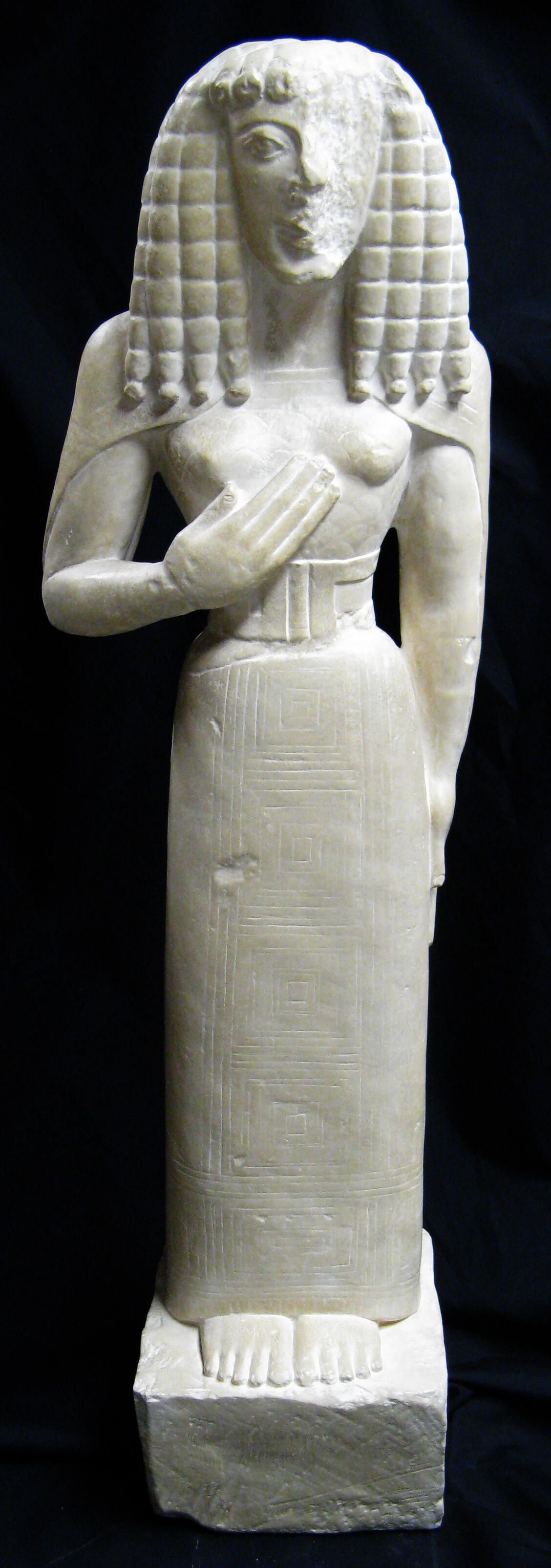Lady of Auxerre
Name/Title
Lady of AuxerreEntry/Object ID
75A0202Description
Small figure of a woman with stylized hair and dress. Hands and feet are unnaturally elongated with right hand on chest just below the breasts. She wears a dress of ancient Cretan type with shoulder covering, scallop decoration on the bodice, a broad belt at waist, as well as geometric meander and key decoration running vertically down the front of her dress. Her hair is possibly a wig rendered in an Egyptian style. She is standing on a plinth/base. Left side of the face is heavily damaged, with further damage on the left shoulder and along the back.Type of Sculpture
StatueArtwork Details
Medium
PlasterContext
The Lady of Auxerre was named after the little Museum of Auxerre, a small city in the vicinity of Paris, where, in the 19th century, a Louvre curator sighted her in the vault of that museum. No documents or information of any sort were available concerning the circumstances of her arrival there. Given its style, the statue may have originated in Eleutherna, an ancient city in Crete. The statue bears features that set in firmly within the Orientalizing period (mid-8th to mid-7th centuries BCE) when Greek art was influenced by artistic traditions of the Near East. The statue is in the Daedalic style, as indicated by the triangular face and head, as well as the overall geometric shape of the body, the rigid, wig-like hairstyle, the almond-shaped eyes, and the iconic 'Archaic smile'. There is considerable evidence on the statue to indicate that it was originally painted. Not much is known about the purpose of this statue. She may be either a goddess, or a funerary statue, or a figure of a maiden dedicated to the gods. The Lady of Auxerre is considered to be one of the earliest examples of korai statues, which were figures of clothed young females that emerged during the Archaic period (800-480 BCE). Korai statues likely referred to young women as priestesses dedicated to goddesses such as Athena and Artemis. Such korai statues were often commissioned by aristocratic families and used as either votive offerings at temples or sanctuaries, or as grave markers and dedications to the dead in cemeteries.Collection
Archaic GreeceMade/Created
Date made
650 BCE - 625 BCETime Period
ArchaicPlace
City
EleuthernaIsland
CreteEthnography
Culture/Tribe
Greek - Archaic

